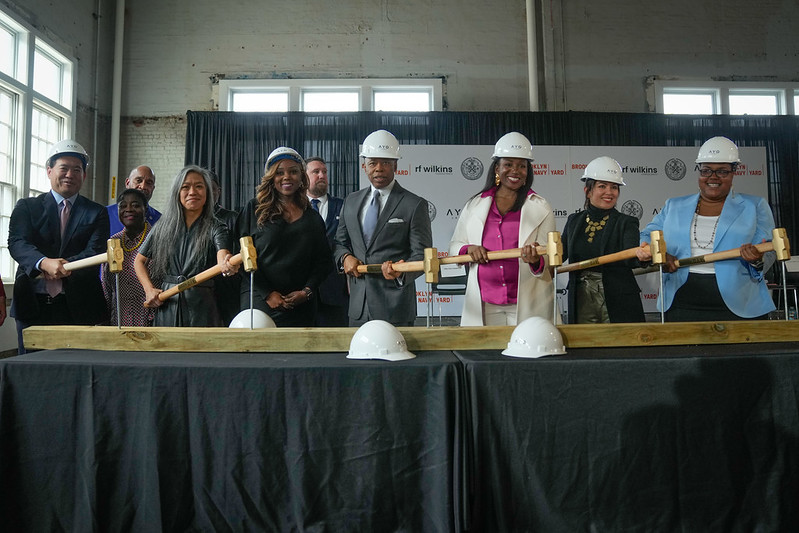In a city as big and influential as New York, a mayoral administration’s legacy is often judged by the boldness of the projects it advanced. What big ideas did they think up to solve the problems of their day? And how did they benefit the next generation of New Yorkers? Using these criteria, just two and a half years into the first term of Mayor Adams, I am confident that history will judge us well.
Every administration faces monumental challenges. The Bloomberg administration, for example, was handed a city with shattered confidence and an uncertain future in the wake of the Sept. 11 attack. They responded by building the city back up and their boldness buoyed the economy and gave the world a reason to believe in New York again.
Our administration has faced a different challenge: a city still reeling from the aftermath of the COVID-19 pandemic, which exacerbated an affordability crisis, changed the trajectory of our economy, and made it even harder for low-and middle-income New Yorkers to stay in the city they called home.
Too often, approaches to development have been neighborhood or site-specific. Headline-grabbing projects were often synonymous with progress. But there’s another way: one that is foundational, citywide, and comes with an unwavering commitment — above all else — to creating opportunity across every neighborhood. This doesn’t mean running away from bold projects, but it does mean ensuring that every project leads to the deeper and more lasting affordability that our times demand.
Our strategy starts with rewiring the foundation of our city to ensure opportunity can finally spread across the five boroughs. Our historic “City of Yes” initiatives will upend outdated zoning for the first time in decades to protect our environment, grow small and modern businesses, and build badly needed housing that has been blocked by restrictive and discriminatory rules.
These efforts will be bolstered by ambitious neighborhood plans, our back-to-back record-breaking years in creating new affordable homes, historic investments in NYCHA, and projects like Willets Points, the city’s largest affordable housing project in nearly 40 years.
We’re also building new economic engines in every corner of our city. Just look along our waterways, and you’ll see our efforts to build climate innovation centers on Governors Island and the Brooklyn Army Terminal, create a new life sciences hub in Kips Bay, transform more than 100 acres at the Brooklyn Marine Terminal in Red Hook, finally redevelop the Kingsbridge Armory, electrify the markets at Hunts Point, and deliver thousands of jobs to the North Shore of Staten Island. We’ve designed these projects with tangible onramps for underserved New Yorkers to learn and train in emerging fields.
What makes our approach most fitting for our time, however, is our efforts to deliver opportunities to New Yorkers right now. That’s why we’ve brought hiring halls directly to underserved neighborhoods. We’ve also launched a community hiring effort that will leverage city contracts to create new jobs for economically-disadvantaged New Yorkers. And we’ve awarded billions of dollars to nearly 2,000 minority- and women-owned business enterprise-certified firms — the most in the city’s history.
Why am I so confident in the success of our approach? Because it’s already working; we’ve driven down unemployment for Black and Latino New Yorkers by approximately 30%, created more small businesses than any time in our city’s history, and have continued to break our own jobs records.
Equally as telling, our approach is on pace to outbuild — by magnitudes — strategies of the past. The number of homes projected to be built by our citywide and neighborhood zoning efforts is more than double the projection during the Bloomberg administration’s 12 years in office, and more than quadruple the projection of the de Blasio administration’s eight. This monumental achievement will serve generations of New Yorkers long after we leave office.
Our strategy isn’t about building up, it’s about building out. Building out to embed opportunity into the foundation of our city, create brand new ways to participate in our economy, and meet every New Yorker where they are so they can prosper in the promise of New York City. If that isn’t bold, I don’t know what is.
Torres-Springer is New York City’s deputy mayor for housing, economic development, and workforce.
